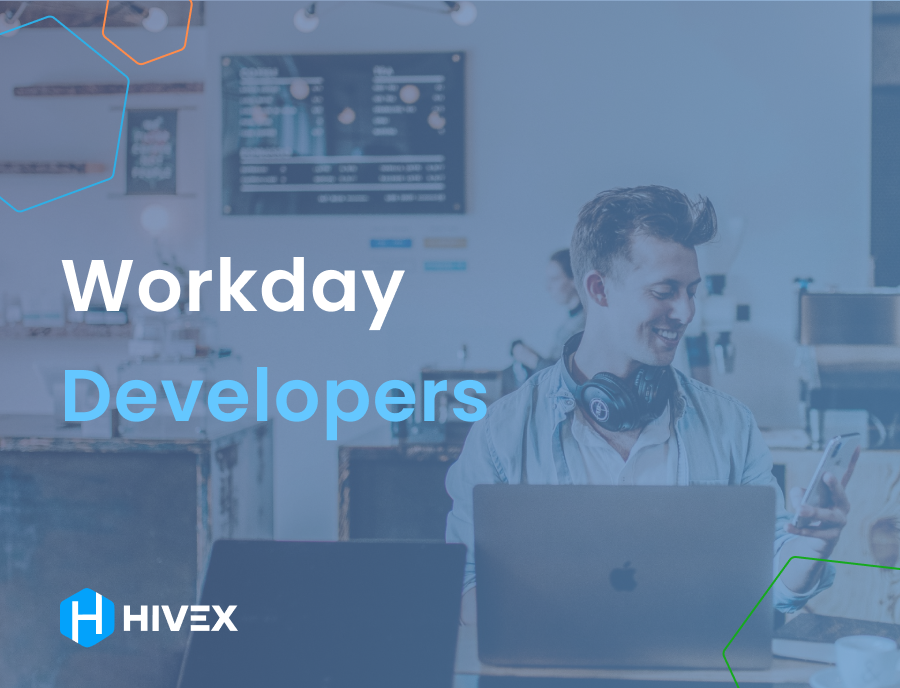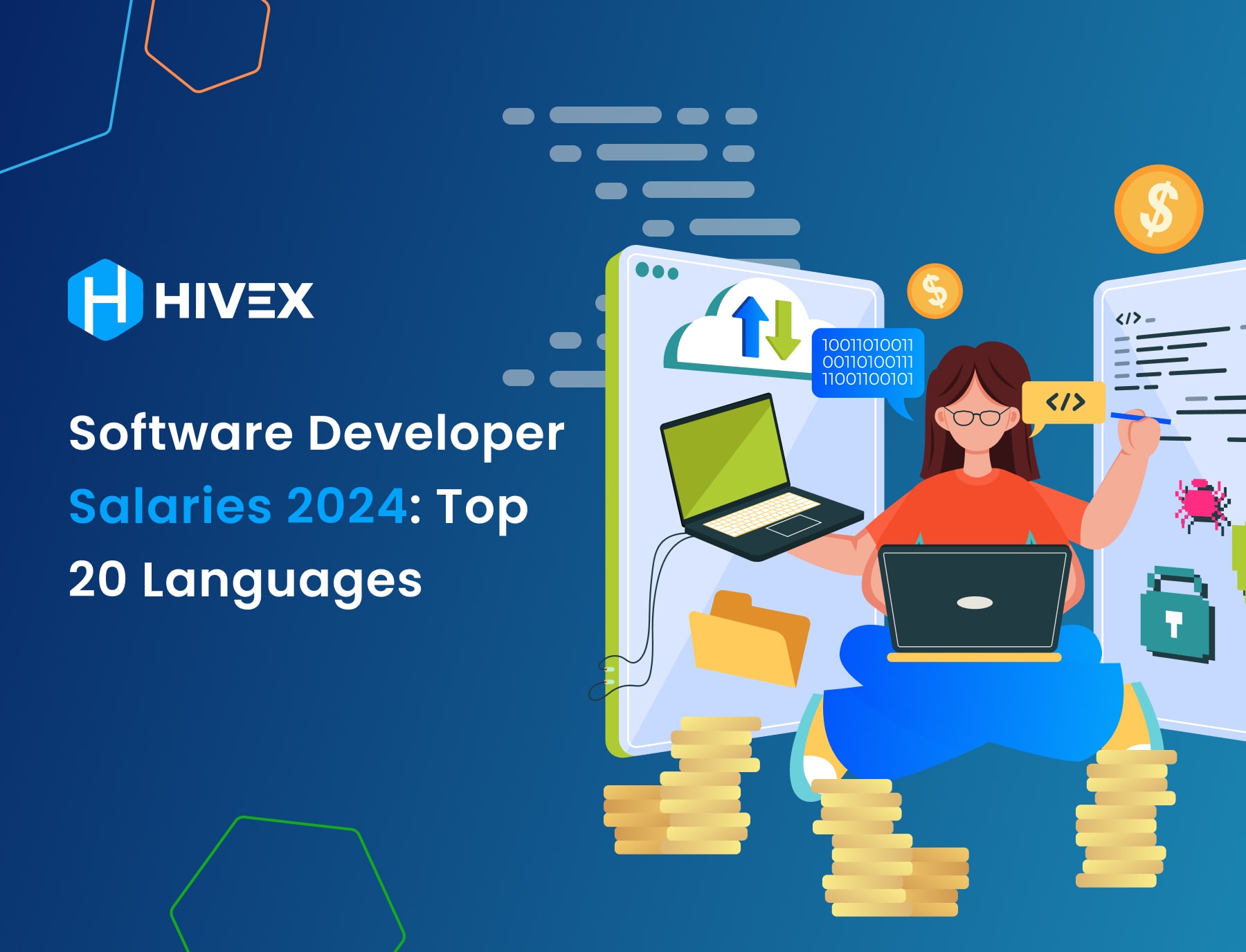10 Ways AI is Transforming Business as We Know It
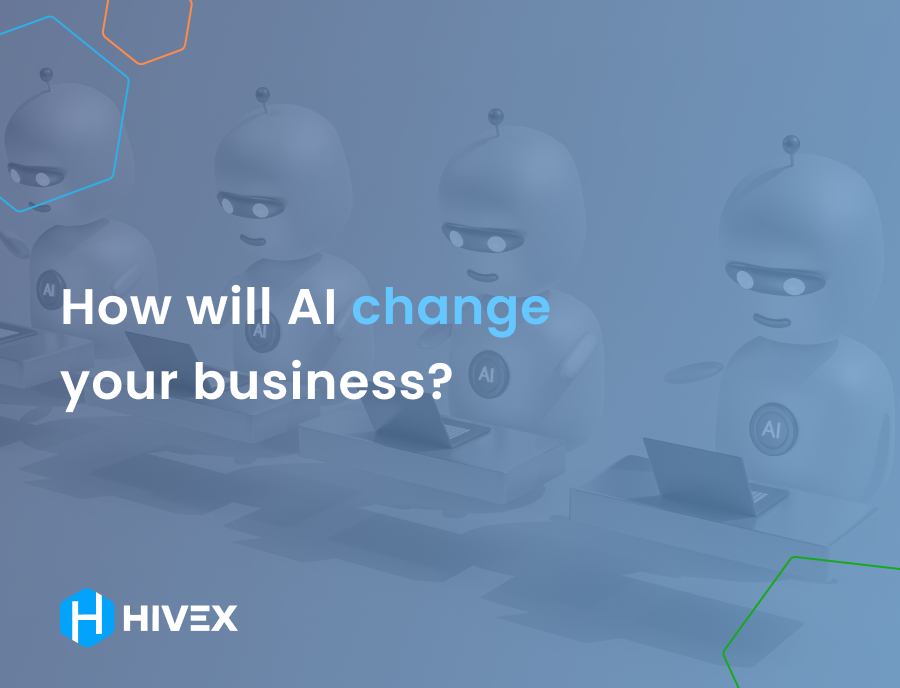
AI is no longer a futuristic concept – it’s a transformative force that’s changing everything.
From automating repetitive tasks to unleashing powerful insights from vast amounts of data, AI is reshaping the way companies operate, make decisions, and interact with customers.
In this article, we’ll explore five key ways AI is driving business transformation and provide actionable insights for organizations looking to harness its potential.
Get ready to discover how AI can:
- Streamline processes and boost efficiency
- Personalize customer experiences like never before
- Empower data-driven decision-making
- And much more
Whether you’re a business leader, an IT professional, or simply curious about the impact of AI, this article will equip you with the knowledge and strategies to take advantage of it.
Let’s dive in and uncover AI’s transformative power in the enterprise world.
Quick Navigation
What is AI Transformation in Business?
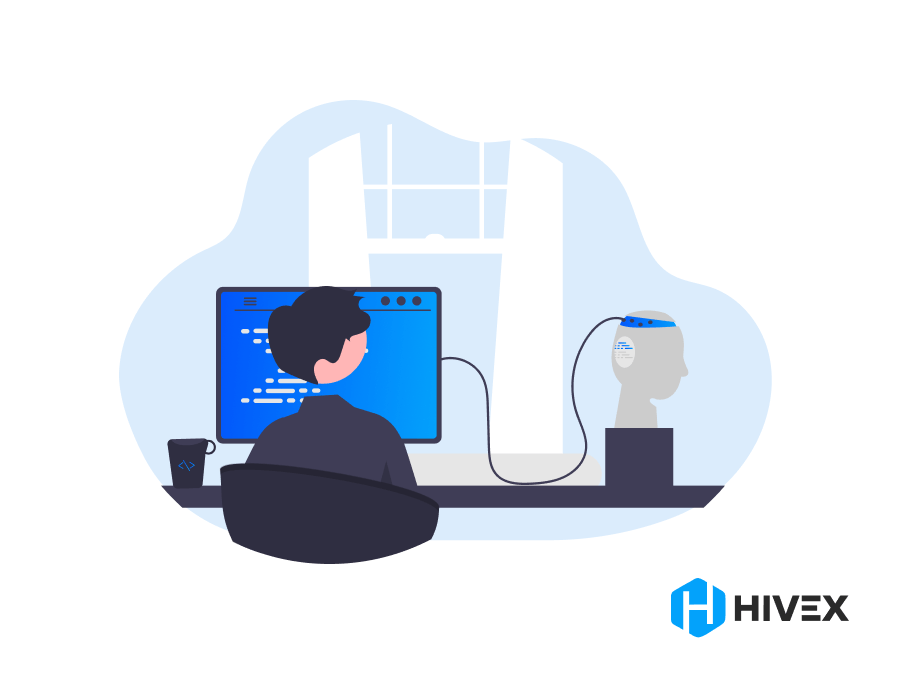
AI transformation in business refers to the integration of artificial intelligence technologies to enhance various aspects of an organization’s operations, decision-making, and customer experience.
As businesses strive to remain competitive, AI has emerged as a powerful tool to streamline processes, extract valuable insights from data, and drive innovation.
Examples of AI Transformation in Business
AI transformation is not limited to a specific industry or business function. Here are some examples of how AI is being applied across various sectors:
Chatbots for customer support
Many businesses implement AI-powered chatbots to provide 24/7 customer support. These chatbots can handle routine inquiries, assist with product recommendations, and even process transactions, freeing up human agents to focus on more complex issues.
According to IBM, chatbots can reduce customer service costs by 30%. Additionally, a study by Juniper Research found that chatbots can save businesses up to $0.70 per interaction compared to traditional human customer service.
Predictive analytics for sales forecasting
AI-powered predictive analytics enables businesses to analyze historical sales data, identify patterns, and forecast future sales trends. This helps companies optimize inventory management, allocate resources effectively, and make data-driven decisions.
Fraud detection in financial services
AI algorithms can analyze vast amounts of financial data in real-time to detect suspicious activities and prevent fraud. By leveraging machine learning, financial institutions can identify potential fraud cases more accurately and efficiently than traditional methods.
Types of AI Applications in Business
AI encompasses various subfields, each with its own set of applications in the business world. Let’s explore some of the most common types of AI applications:
Natural Language Processing (NLP)
NLP enables computers to understand, interpret, and generate human language. In business, NLP is used for:
- Sentiment analysis: analyzing customer feedback, social media posts, and reviews to gauge brand perception and identify areas for improvement
- Text classification: automatically categorizing and routing customer inquiries to the appropriate departments for faster resolution
- Language translation: breaking down language barriers to facilitate global communication and expand business reach
Computer Vision
Computer vision allows machines to interpret and understand visual information from images and videos. Business applications include:
- Object recognition: automating quality control processes in manufacturing by identifying defective products
- Image classification: organizing and tagging large volumes of visual content for efficient retrieval and analysis
- Facial recognition: enhancing security measures and personalizing customer experiences in the retail and hospitality industries
Machine Learning
Machine learning involves training algorithms to learn from data and improve performance over time. In business, machine learning is used for:
- Predictive modeling: forecasting demand, optimizing pricing strategies, and identifying potential risks
- Recommendation systems: personalizing product and content recommendations based on user preferences and behavior
- Anomaly detection: identifying unusual patterns or outliers in data to prevent fraud, equipment failures, or cyber threats
As businesses continue to adopt AI transformation, it’s essential to understand the ethical considerations and potential biases associated with AI systems. Responsible AI practices, such as ensuring data privacy, promoting transparency, and mitigating algorithmic bias, should be at the forefront of any AI implementation strategy.
Benefits of AI-Powered Automation

- AI automation boosts efficiency, reduces costs, and enhances decision-making
- Businesses can gain a competitive edge by leveraging AI’s capabilities
- Implementing AI requires careful planning and addressing potential challenges
Increased Efficiency
One of the primary benefits of AI-powered automation is its ability to increase efficiency in business operations significantly. By automating repetitive and time-consuming tasks, AI allows employees to focus on higher-value work that requires human creativity and problem-solving skills.
For example, in the banking industry, AI can automate the processing of loan applications, credit checks, and fraud detection. This not only speeds up the process but also reduces the likelihood of human error, which can be costly and damaging to a company’s reputation.
Streamlining Repetitive Tasks
AI excels at handling repetitive tasks that would otherwise consume valuable employee time. In manufacturing, AI-powered robots can work 24/7 without breaks, maintaining consistent quality and output. This frees up human workers to focus on tasks that require more complex decision-making and creativity.
Cost Reduction
Implementing AI-powered automation can lead to substantial cost savings for businesses. By automating processes and optimizing resource allocation, companies can minimize labor costs and prevent costly mistakes.
In the healthcare industry, AI can analyze vast amounts of patient data to identify patterns and predict potential health risks. This early detection can help healthcare providers intervene sooner, reducing the need for more expensive treatments down the line.
Minimizing Labor Costs
AI automation can significantly reduce labor costs by taking over tasks previously performed by human workers. While this may raise concerns about job displacement, it also presents opportunities for businesses to redeploy employees to more strategic roles that require human skills such as empathy, creativity, and critical thinking.
Improved Decision-Making
AI’s ability to process and analyze massive amounts of data in real time enables businesses to make more informed, data-driven decisions. By leveraging AI’s predictive capabilities, companies can identify trends, anticipate customer needs, and optimize their strategies accordingly.
In the retail industry, AI can analyze customer data to personalize product recommendations, optimize pricing, and improve inventory management. This not only enhances the customer experience but also helps retailers stay competitive in an increasingly digital marketplace.
Real-Time Analysis
AI’s real-time analysis capabilities allow businesses to quickly adapt to changing market conditions and customer preferences. By continuously monitoring and analyzing data from various sources, AI can provide actionable insights that enable companies to make timely decisions and stay ahead of the curve.
Enhanced Customer Experience
AI-powered automation can significantly improve the customer experience by providing personalized recommendations, faster response times, and 24/7 support. By analyzing customer data and behavior, AI can anticipate needs and tailor interactions accordingly.
In the travel industry, AI-powered chatbots can handle customer inquiries, make personalized recommendations, and even assist with booking and itinerary planning. This not only improves customer satisfaction but also frees up human agents to handle more complex issues that require a personal touch.
Personalized Recommendations
AI’s ability to analyze vast customer data enables businesses to provide highly personalized recommendations and experiences. By understanding individual preferences and behavior, AI can suggest relevant products, services, and content that are more likely to resonate with each customer.
Competitive Advantage
Businesses that successfully implement AI-powered automation can gain a significant competitive advantage in their respective industries. By leveraging AI’s capabilities to increase efficiency, reduce costs, and improve decision-making, companies can outpace their rivals and capture a larger share of the market.
For instance, companies like Amazon and Google have successfully implemented AI automation to enhance their operations and customer experiences. Amazon’s AI-powered recommendation systems have significantly increased sales, while Google’s AI-driven search algorithms have improved search results and user satisfaction.
However, implementing AI requires careful planning and consideration of potential challenges, such as data privacy concerns and the need for employee training and adaptation. Companies must also ensure that their AI systems are transparent, explainable, and aligned with ethical principles to maintain customer trust and avoid unintended consequences.
Machine Learning in Business

- Enables businesses to automate tasks, gain insights, and make data-driven decisions
- Improves efficiency, reduces costs, and enhances customer experiences
- Transforms industries like healthcare, finance, and e-commerce
It’s the age of machine learning. By leveraging the power of data and algorithms, businesses can automate complex tasks, uncover hidden patterns, and make more informed decisions. Machine learning is redefining industries and changing how companies work. It’s not just a buzzword.
Personalized Customer Experiences
One of the most significant applications of ML in business is its ability to personalize customer experiences. By analyzing vast amounts of customer data, ML algorithms can identify individual preferences, behaviors, and needs, enabling businesses to deliver tailored solutions.
Targeted Marketing Campaigns
ML-powered targeted marketing campaigns have proven to be highly effective in reaching the right audience with the right message at the right time. By segmenting customers based on their demographics, interests, and past interactions, businesses can create personalized marketing messages that resonate with each individual.
This approach not only improves customer engagement but also increases conversion rates and customer loyalty. According to a study by McKinsey, personalized marketing can lead to a 10-15% increase in sales and a 10-20% increase in customer satisfaction.
Customized Product Recommendations
ML algorithms can analyze customer browsing and purchase history to provide personalized product recommendations. This technique, popularized by e-commerce giants like Amazon, has become a standard feature on many online platforms.
By suggesting products that match a customer’s preferences, businesses can increase cross-selling and upselling opportunities, ultimately boosting revenue. For instance, a study by Forrester found that personalized product recommendations can lead to a 10% increase in sales and a 20% increase in customer satisfaction.
Dynamic Pricing
Dynamic pricing is another ML-driven strategy that helps businesses optimize their pricing based on real-time market demands. By analyzing factors like competitor prices, customer behavior, and supply and demand, ML algorithms can adjust prices automatically to maximize profitability. This approach is particularly useful in industries like hospitality and transportation, where prices can fluctuate rapidly based on various factors.
Predictive Maintenance
In the manufacturing and industrial sectors, ML is revolutionizing the way companies approach equipment maintenance. Predictive maintenance involves using ML algorithms to monitor the health of machines and predict potential failures before they occur.
Monitoring Equipment Health
By collecting data from sensors embedded in machines, ML algorithms can continuously monitor the performance and condition of equipment. This real-time monitoring enables businesses to detect anomalies, such as unusual vibrations or temperature changes, which may indicate a potential problem.
Identifying Potential Failures
ML models can analyze the collected data to identify patterns and correlations that may signal an impending failure. By comparing the current data with historical failure data, the algorithms can predict when a machine is likely to break down.
This early warning system allows businesses to take proactive measures to prevent costly downtime and repairs.
According to MarketsandMarkets, the predictive maintenance market is expected to grow from $2.2 billion in 2020 to $10.9 billion by 2025, at a compound annual growth rate (CAGR) of 34.4% during the forecast period.
Scheduling Proactive Maintenance
Based on the predictions made by ML models, businesses can schedule maintenance activities at optimal times. Instead of relying on fixed maintenance schedules, which may be inefficient and costly, ML-driven predictive maintenance enables companies to prioritize maintenance tasks based on the actual condition of the equipment.
This approach minimizes disruptions to production and reduces overall maintenance costs.
Supply Chain Optimization
ML is also transforming the way businesses manage their supply chains. By leveraging ML algorithms, companies can optimize various aspects of their supply chain, from demand forecasting to inventory management and logistics planning.
Demand Forecasting
Accurate demand forecasting is crucial for businesses to ensure they have the right products in the right quantities at the right time.
ML models can analyze historical sales data, market trends, and external factors like weather and economic indicators to predict future demand.
By improving demand forecasting accuracy, businesses can reduce overstocking, minimize stockouts, and optimize inventory levels.
Inventory Management
ML algorithms can help businesses optimize their inventory management by predicting optimal stock levels based on factors like lead times, supplier reliability, and demand variability.
By continuously monitoring inventory levels and adjusting them in real-time, businesses can reduce carrying costs, improve cash flow, and ensure they always have the right products in stock.
Logistics Planning
ML can also optimize logistics planning by helping businesses determine the most efficient routes for transportation, considering factors like traffic patterns, weather conditions, and delivery time windows.
By using ML algorithms to plan and schedule deliveries, businesses can reduce transportation costs, improve on-time delivery rates, and enhance customer satisfaction.
Fraud Detection and Risk Management
In industries like finance and insurance, ML is playing a crucial role in detecting and preventing fraud, as well as managing risk. By analyzing vast amounts of transactional data, ML algorithms can identify unusual patterns and anomalies that may indicate fraudulent activities.
For example, in the banking sector, ML models can analyze customer transactions in real time, flagging suspicious activities like unusual spending patterns or large cash withdrawals.
This early detection enables banks to take immediate action to prevent fraud and protect their customers’ accounts.
In the insurance industry, ML is helping companies assess risk more accurately by analyzing factors like customer demographics, claims history, and external data sources.
By using ML to predict the likelihood of claims and detect potential fraud, insurance companies can optimize their underwriting processes, reduce losses, and offer more competitive premiums to low-risk customers.
Predictive Analytics for Business Strategy
ML-powered predictive analytics is transforming the way businesses make strategic decisions.
By analyzing vast amounts of data from various sources, including customer interactions, market trends, and competitor activities, ML algorithms can provide valuable insights that inform business strategy.
For example, ML models can predict which products or services are likely to be most successful in a given market, based on factors like customer preferences, market conditions, and competitor offerings. This information can help businesses make informed decisions about product development, pricing, and marketing strategies.
Predictive analytics can also help businesses identify potential opportunities and risks, such as emerging market trends or shifts in customer behavior. Maintaining a competitive edge requires businesses to adapt their strategies.
As businesses continue to generate and collect vast amounts of data, the potential applications of ML will only continue to grow. Companies that take advantage of this transformative technology and leverage its power to make data-driven decisions will be well-positioned to excel in the AI age.
Artificial Intelligence and Data Analytics
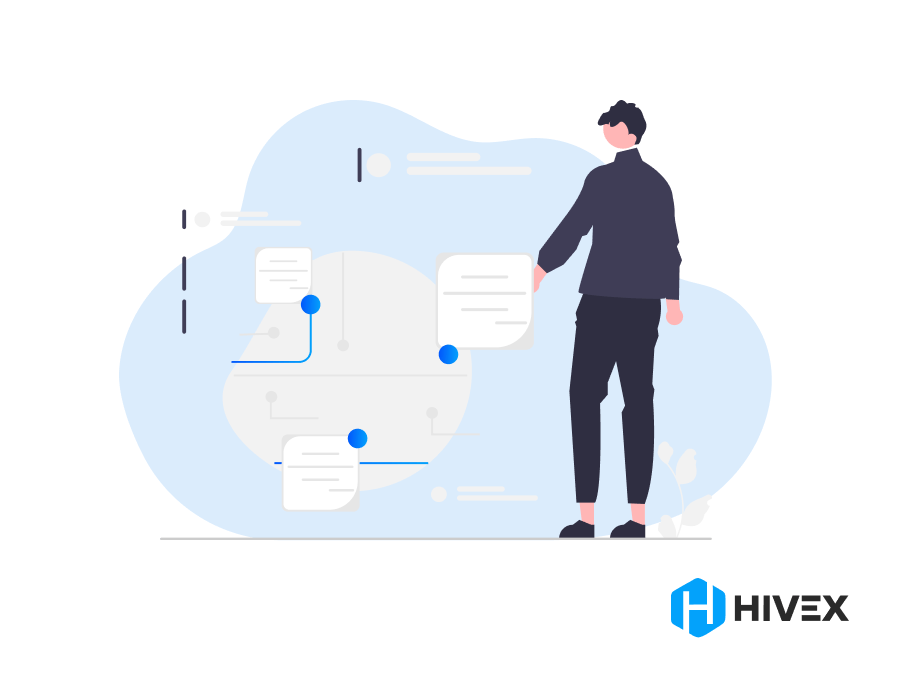
- AI is revolutionizing data analytics, enabling businesses to process vast amounts of data and gain valuable insights
- Advanced analytics techniques like predictive and prescriptive analytics help organizations make data-driven decisions
- Data visualization tools powered by AI make it easier for stakeholders to understand and act upon complex data
Big Data Processing
Businesses generate and collect massive volumes of data from various sources such as social media, IoT devices, and transactional systems. AI plays a crucial role in processing and analyzing this big data efficiently.
Machine learning algorithms can handle both structured and unstructured data, allowing organizations to extract meaningful patterns and insights that would be impossible to uncover manually.
Real-time data streaming and analysis is another area where AI shines. With the help of AI-powered tools, businesses can process data as it comes in, enabling them to make swift decisions based on up-to-the-minute information.
This is particularly valuable in industries like finance, healthcare, and e-commerce, where timely actions can make a significant impact on business outcomes.
Data integration is a challenge that many organizations face, especially when dealing with data from multiple sources. AI can help streamline this process by automating data cleaning, transformation, and integration tasks.
By leveraging natural language processing (NLP) and machine learning techniques, AI systems can understand the context and relationships between data points, making it easier to combine data from disparate sources into a unified, coherent dataset.
Advanced Analytics
AI is taking data analytics to new heights with advanced techniques like predictive, prescriptive, and cognitive analytics. Predictive analytics uses historical data, machine learning, and statistical algorithms to forecast future events and trends.
This helps businesses anticipate customer behavior, market shifts, and potential risks, allowing them to make proactive decisions and stay ahead of the curve.
Prescriptive analytics goes a step further by not only predicting future outcomes but also suggesting the best course of action to optimize results.
AI algorithms can analyze complex scenarios, consider multiple variables, and recommend data-driven strategies to achieve specific goals, such as maximizing profits or minimizing costs.
This type of analytics is particularly valuable in supply chain management, resource allocation, and dynamic pricing.
Cognitive analytics is an emerging field that combines AI with human-like intelligence to process and interpret unstructured data, such as text, images, and videos.
By leveraging NLP, computer vision, and deep learning techniques, cognitive analytics systems can understand the context, sentiment, and intent behind unstructured data, providing businesses with valuable insights into customer opinions, market trends, and competition.
Data Visualization
Data visualization is a critical component of data analytics, as it helps stakeholders understand and act upon complex data. AI changes data visualization by enabling the creation of interactive dashboards, geospatial mapping, and augmented reality interfaces.
Interactive dashboards powered by AI can automatically identify key metrics, trends, and anomalies, presenting data in a visually compelling and easy-to-understand format. These dashboards can also adapt to user preferences and behavior, providing personalized insights and recommendations.
Geospatial mapping is another area where AI is making a significant impact. By combining geographical data with other data sources, AI-powered systems can create detailed maps that visualize patterns, relationships, and trends across different regions.
This is especially useful for businesses with a strong local presence, such as retailers, restaurants, and service providers.
Augmented reality (AR) interfaces are an emerging trend in data visualization, offering a more immersive and interactive way to explore data.
AI can help create AR experiences that overlay data insights onto the real world, enabling users to interact with data in a more intuitive and engaging manner. This technology has potential applications in various fields, such as urban planning, architecture, and education.
Future of AI in Enterprise

- AI will continue to automate processes, augment human intelligence, and tackle complex challenges
- Businesses must prioritize ethical AI development and deployment to ensure trust and transparency
- AI-driven personalization and predictive analytics will reshape customer experiences and business strategies
Intelligent Automation
Robotic Process Automation (RPA)
RPA has already made significant strides in automating repetitive, rule-based tasks across various industries. As AI advances, RPA will become more intelligent, capable of handling complex processes that require decision-making and adaptability.
According to Gartner, by 2024, organizations will lower operational costs by 30% by combining hyper-automation technologies with redesigned operational processes.
Cognitive Automation
Cognitive automation takes RPA to the next level by incorporating AI technologies like machine learning, natural language processing, and computer vision. This enables automation of tasks that require perception, judgment, and adaptation.
For example, cognitive automation can analyze unstructured data, such as emails or documents, to extract relevant information and make decisions based on that data. The global cognitive computing market size is expected to reach $77.5 billion by 2025, growing at a CAGR of 33.1% from 2020 to 2025, according to a report by Grand View Research.
Hybrid Workforce Models
As AI-driven automation becomes more prevalent, businesses will need to adapt their workforce models to leverage the strengths of both human and machine intelligence. This will involve upskilling employees to work alongside AI systems, as well as creating new roles that focus on managing and optimizing AI performance.
Deloitte’s 2020 Global Human Capital Trends survey found that 41% of respondents expect their organizations to use AI to assist workers in the near term, while 34% expect AI to replace certain jobs.
Augmented Intelligence
Human-AI Collaboration
Augmented intelligence focuses on enhancing human capabilities through AI, rather than replacing human workers. By leveraging AI’s data processing and pattern recognition capabilities, humans can make more informed decisions and tackle complex problems more effectively.
For instance, in healthcare, AI can assist doctors in analyzing medical images, identifying potential diagnoses, and recommending treatment plans, ultimately leading to improved patient outcomes.
Decision Support Systems
AI-powered decision support systems can help businesses make data-driven decisions by analyzing vast amounts of data, identifying trends, and predicting future outcomes. These systems can be applied across various domains, such as finance, marketing, and supply chain management.
For example, AI can analyze market trends, customer behavior, and competitor strategies to help businesses make informed decisions about product development, pricing, and marketing campaigns.
Creative Problem-Solving
AI can also augment human creativity by generating novel ideas and solutions. Generative AI models, such as GPT-4 (4-o and 4-o mini) and Claude, can produce human-like text, images, and even code based on input prompts.
This technology can be used to brainstorm new product ideas, create content, and solve complex problems. As AI continues to advance, it will likely play an increasingly important role in fostering innovation and creativity within enterprises.
Ethical AI
Transparency and Explainability
As AI becomes more integrated into business processes and decision-making, it is crucial to ensure that AI systems are transparent and explainable. This means that businesses must be able to understand how AI systems arrive at their decisions and be able to communicate this to stakeholders.
Explainable AI (XAI) techniques, such as LIME and SHAP, can help unpack the “black box” of AI models and provide insights into their decision-making processes.
Bias Detection and Mitigation
AI systems can inadvertently perpetuate or amplify biases present in the data they are trained on, leading to unfair or discriminatory outcomes. To mitigate this risk, businesses must prioritize bias detection and mitigation throughout the AI development and deployment lifecycle.
This involves carefully curating training data, using techniques like adversarial debiasing, and regularly auditing AI systems for fairness and inclusivity.
Some key strategies for bias mitigation include:
- Diverse and representative training data
- Fairness metrics and constraints during model training
- Ongoing monitoring and auditing of AI systems in production
- Inclusive and diverse AI development teams
Privacy and Security Considerations
As AI systems process and generate vast amounts of data, including sensitive personal information, businesses must prioritize data privacy and security.
This involves implementing robust data governance frameworks, adhering to privacy regulations like GDPR and CCPA, and using techniques like federated learning and differential privacy to protect user data during AI training and inference.
Additionally, businesses must be vigilant against potential security risks associated with AI, such as adversarial attacks and data poisoning. Implementing security best practices, such as model versioning, access controls, and continuous monitoring, can safeguard AI systems against these threats.
How to Implement AI in Business Processes

Step 1: Identify Opportunities
Before diving into AI implementation, it’s crucial to assess your business processes and identify areas where AI can make the most impact.
Start by evaluating your current workflows, bottlenecks, and pain points. Look for repetitive tasks, data-intensive processes, and decision-making challenges that could benefit from AI-powered automation or insights.
Consider various AI use cases, such as customer service chatbots, predictive maintenance for equipment, or personalized product recommendations.
Prioritize these opportunities based on their potential impact on efficiency, cost savings, and customer satisfaction, as well as their feasibility given your current resources and capabilities.
For example, in the healthcare industry, AI can be used for medical imaging analysis, patient diagnosis, and personalized treatment plans. In retail, AI can enhance the customer experience through personalized product recommendations and chatbots.
Step 2: Develop an AI Strategy
Once you’ve identified potential AI opportunities, it’s time to develop a comprehensive strategy that aligns with your overall business goals. This strategy should outline your AI initiatives, set clear objectives, and establish a roadmap for implementation.
Align AI Initiatives with Business Goals
Ensure that your AI projects support your company’s strategic priorities, whether it’s improving customer experience, optimizing operations, or driving innovation. By aligning AI with your business goals, you can justify investments and secure executive buy-in.
Establish a Roadmap and Timeline
Create a phased approach to AI implementation, starting with quick wins and gradually progressing to more complex projects.
Set realistic timelines and milestones, taking into account the time needed for data preparation, model training, and integration with existing systems.
Allocate Resources and Budget
Determine the resources required for your AI initiatives, including talent, technology, and infrastructure.
Allocate a budget that covers the costs of data storage, computing power, AI tools and platforms, and staff training. Keep in mind that AI investments may take time to yield returns, so plan accordingly.
Step 3: Build AI Capabilities
Implementing AI in your business requires a combination of the right talent, infrastructure, and organizational culture. Here’s how to build the necessary capabilities:
Acquire Talent and Expertise
Hire or train employees with AI skills, such as data scientists, machine learning engineers, and AI product managers. Consider partnering with external AI vendors or consultants to accelerate your AI adoption and fill skill gaps.
Invest in Infrastructure and Tools
Ensure that you have the right infrastructure in place to support your AI initiatives. This may include cloud computing platforms, data storage solutions, and AI development tools. Evaluate and select AI platforms and APIs that align with your needs and budget.
Foster a Data-Driven Culture
Cultivate an organizational culture that values data-driven decision-making and experimentation. Encourage employees to embrace AI and provide them with the necessary training and resources to leverage AI tools effectively.
Break down data silos and promote collaboration between teams to unlock the full potential of AI.
Step 4: Pilot and Test
Before scaling AI across your organization, it’s essential to pilot and test your AI projects to validate their effectiveness and identify areas for improvement.
Start with Small-Scale Projects
Begin with focused, manageable AI initiatives that can demonstrate quick wins. This approach allows you to build confidence in AI and gain valuable insights without overcommitting resources.
Measure Performance and ROI
Establish clear metrics to evaluate the performance and ROI of your AI pilots. Track key indicators such as efficiency gains, cost savings, or customer satisfaction. Use these metrics to build a business case for further AI investments.
Iterate and Refine Based on Feedback
Gather feedback from stakeholders, end-users, and customers to identify areas for improvement. Continuously iterate and refine your AI models and applications based on this feedback to ensure they meet evolving needs and deliver maximum value.
Step 5: Scale and Integrate
Once your AI pilots have proven successful, it’s time to scale and integrate AI across your organization.
Expand Successful AI Applications
Identify AI projects that have delivered significant benefits and explore opportunities to extend them to other business areas or processes. Develop a plan to scale these applications while ensuring they remain aligned with your overall AI strategy.
Integrate AI into Existing Systems and Processes
Seamlessly integrate AI into your existing IT infrastructure and business processes. Ensure that AI applications can exchange data and insights with other systems to create a cohesive and efficient ecosystem.
Continuously Monitor and Optimize
Regularly monitor the performance of your AI applications and make data-driven decisions to optimize their effectiveness. Stay up-to-date with the latest AI advancements and best practices, and be prepared to adapt your AI strategy as needed.
By following these steps and best practices, you can successfully implement AI in your business and unlock its transformative potential.
Remember to approach AI adoption as an ongoing journey, continuously learning and adapting as you go.
The bottom line
As we wrap up our exploration of how artificial intelligence is redefining the landscape of modern businesses, it’s clear that the integration of AI tools and machine learning algorithms is more than just a technological upgrade – it’s a strategic enhancement across various business functions.
From customer relationship management to cybersecurity and fraud management, AI’s reach is vast, transforming not only how companies operate but also how they interact with their customers.
AI in business isn’t just about automating routine tasks. It’s about enhancing operational efficiency and making more informed decisions through advanced data analysis. The insights derived from AI solutions empower business leaders to better understand consumer behavior, leading to more effective marketing strategies and personalized customer insights.
Small business owners might wonder how AI can be relevant for them. It’s not just for the big players. AI technology can be scaled to fit the needs and budgets of smaller business units, helping them compete in a fast-changing market.
Moreover, the role of human employees is evolving alongside these cognitive technologies. Instead of replacing the human workforce, AI supports and enhances the skills of your teams, allowing them to focus on more creative and strategic tasks.
This partnership between man and machine in business management showcases a shift towards a more agile and informed operational model.
Whether you’re a seasoned executive or just starting out, understanding and leveraging AI can significantly benefit your operational strategy and execution.
From computer systems that predict maintenance needs to deep learning models that personalize customer experiences, the potential of AI is just beginning to unfold.
Embracing AI doesn’t mean understanding all the technical details – business analytics and AI experts can guide your implementation strategy.
The key is to recognize the potential of AI to transform your business operations and customer relations profoundly and positively. Let’s step into the future together, leveraging AI to not only meet but exceed our business aspirations.
